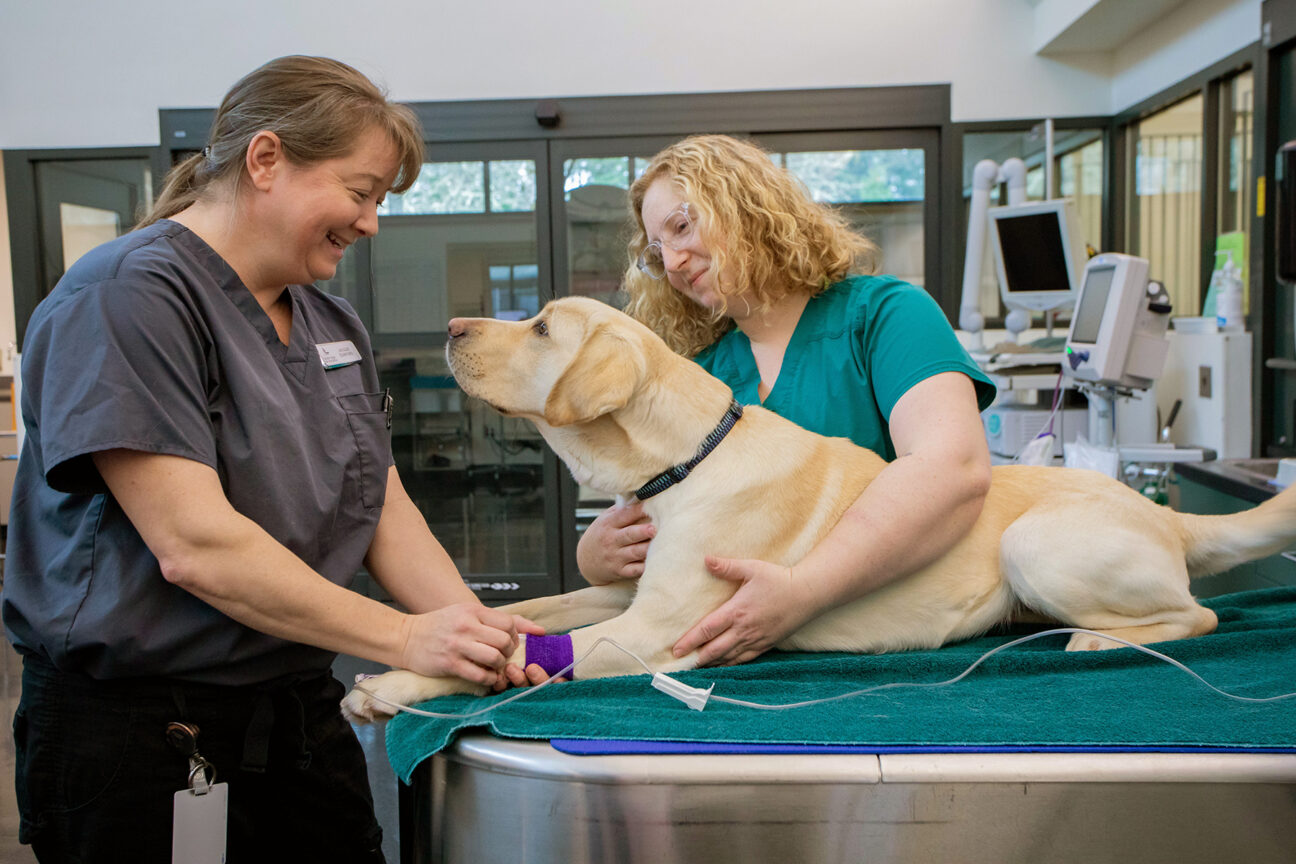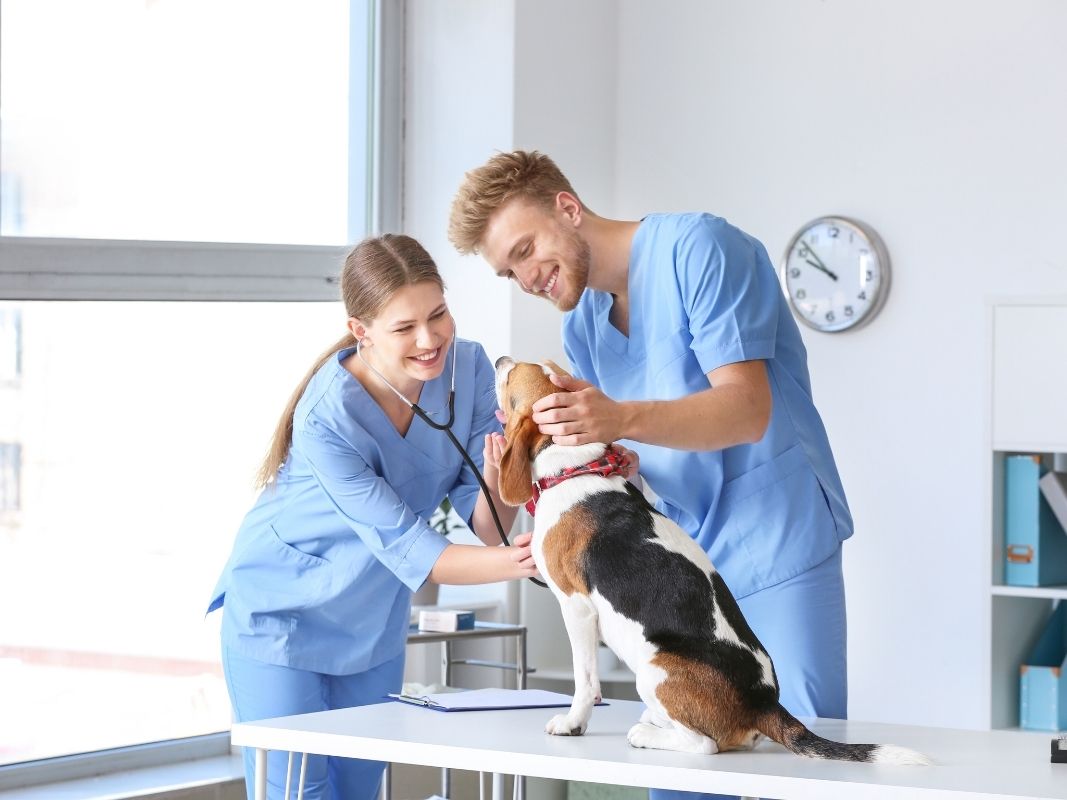When Every Second Counts: How an emergency vet Can Make All the Difference
When Every Second Counts: How an emergency vet Can Make All the Difference
Blog Article
Everything About Vet Surgical Procedure: Recognizing the Significance of Professional Take Care Of Your Family pets
Vet surgical procedure is a critical part of animal medical care. It encompasses various treatments, from regular elective surgical procedures to urgent interventions. Comprehending the details of these surgical treatments can aid pet owners make educated choices. The preparation, execution, and recuperation stages are vital for guaranteeing the wellness of animals. With correct expertise, owners can navigate the complexities of veterinary treatment. What factors should be thought about before an animal goes through surgical procedure?
Types of Vet Surgeries
When a pet requires medical treatment, comprehending the different types of veterinarian surgeries can assist pet proprietors make notified decisions. Vet surgical procedures can be extensively classified right into three major kinds: elective, immediate, and emergency situation surgical treatments. Elective surgeries, such as spaying or neutering, are intended procedures that are not quickly deadly. Immediate surgical procedures, like those for international body elimination, have to be performed quickly yet are not lethal in the moment. Emergency situation surgical treatments, such as those resolving severe trauma or inner blood loss, are important and require prompt attention.Additionally, surgeries can differ in intricacy, ranging from minimally invasive laparoscopic procedures to a lot more comprehensive open surgical treatments. Each kind of surgical treatment brings its own threats and recovery procedures. Understanding these categories allows pet owners to take part in purposeful discussions with vets, bring about far better outcomes for their cherished animals.
Planning for Your Animal's Surgery
Getting ready for an animal's surgical treatment involves an extensive checklist to ensure all basics are covered. Efficient interaction with the vet is crucial for recognizing the procedure and any kind of essential pre-operative actions - emergency vet bellingham. Additionally, having clear post-operative care directions will help owners offer the finest assistance for their recouping pets
Pre-Surgery List Basics
Guaranteeing a smooth surgical experience for an animal needs careful prep work and interest to information. A pre-surgery checklist is important for family pet proprietors to follow. Confirming the arranged surgical treatment day and time is vital. Owners need to additionally verify that their animal has fasted according to the vet's instructions, generally for 8-12 hours before surgery. Collecting necessary clinical documents, consisting of inoculation background, is essential for the veterinarian's evaluation. It is additionally a good idea to prepare a comfortable area at home for the pet dog's recuperation after surgical procedure. Proprietors should have a strategy for transport to and from the veterinary facility, making sure that the pet is safe and comfortable throughout the journey. Following these steps can greatly enhance the surgical experience.
Interacting With Your Vet

Effective communication with the veterinarian is crucial for a successful surgical experience for family pets. Owners must be prepared to discuss their animal's case history, consisting of any pre-existing conditions, medications, and allergic reactions. This info helps the veterinarian evaluate risks and customize the medical plan accordingly. Furthermore, family pet proprietors need to ask questions relating to the treatment, anesthetic, and expected outcomes to ensure they completely comprehend the procedure. Making clear any uncertainties can reduce anxiousness for both the pet and the owner. It is likewise crucial to interact any kind of behavior adjustments or concerns observed in the pet leading up to the surgery. Eventually, clear discussion fosters trust and collaboration, guaranteeing that pets receive the most effective possible care throughout their medical trip.
Post-Operative Care Instructions
After going over the operation with the veterinarian, animal proprietors need to concentrate on post-operative care directions to help with a smooth recovery for their family pets. These directions typically consist of keeping an eye on the medical site for signs of infection, such as inflammation or discharge. Family pets might require to be kept one's cool and confined to stop excessive motion that might interfere with healing. Pain monitoring is important, so proprietors must follow the vet's advice on administering medicines. Additionally, nutritional constraints may be advised to prevent intestinal upset. Regular follow-up visits are essential to ensure correct healing and address any type of concerns. By adhering to these post-operative treatment guidelines, animal proprietors can greatly add to their pet's healing and overall well-being.
The Surgical Process Explained
The medical process for animals includes important steps that ensure their safety and security and healing. Pre-surgery preparations are essential for decreasing risks, while post-operative treatment guidelines play an important role in promoting healing. Understanding these elements aids pet owners navigate the medical experience much more properly.
Pre-Surgery Preparations
Prior to a family pet goes through surgical treatment, numerous crucial preparations must take location to assure a secure and successful procedure. First, a complete veterinary exam is necessary to assess the animal's overall health and identify any kind of potential dangers. This might consist of blood tests, imaging, or various other diagnostics. The veterinarian will certainly also review anesthetic alternatives customized to the family pet's certain requirements. Additionally, family pet proprietors are generally advised to withhold food and water for a defined time prior to surgery to lessen the risk of difficulties during anesthesia. It is essential for owners to give a full case history, consisting of any kind of drugs or allergies, making certain the medical team has all essential details. Correct interaction and adherence to pre-surgery guidelines can significantly improve the outcome of the procedure.
Post-Operative Treatment Guidelines
Appropriate post-operative care is crucial for making certain a family pet's recuperation complying with surgery. After the procedure, family pets need to be kept an eye on very closely for any kind of indicators of problems, such as too much blood loss, swelling, or uncommon behavior. It is necessary to comply with the vet's guidelines concerning medicines, consisting of painkiller and anti-biotics. Family pets must be maintained in a silent, comfortable atmosphere to reduce anxiety and advertise healing. Limiting activity is crucial; short, leashed walks might be necessary, yet leaping or running ought to be stayed clear of. Routine follow-up appointments ought to be scheduled to examine the healing procedure. In addition, the surgical website should be kept tidy and dry, with any kind of signs of infection reported to a vet without delay. Sticking to these guidelines boosts recuperation end results.
Anesthesia and Discomfort Management
Reliable anesthesia and discomfort monitoring are important parts of vet surgical procedure, making certain that pets remain comfy and safe throughout the procedure. Veterinarians assess each animal's private needs, considering elements such as age, weight, health and wellness status, and the sort of surgery being performed.Anesthesia protocols normally include a mix of pre-anesthetic medicines, induction agents, and inhalant anesthetics, permitting precise control over the pet's level of consciousness. Monitoring throughout surgical treatment is vital; veterinarians constantly observe essential signs to deal with any type of potential issues promptly.Pain management methods may entail opioids, non-steroidal anti-inflammatory medications (NSAIDs), and anesthetics, tailored to the animal's particular scenario. This multifaceted approach helps minimize discomfort and promotes a smoother medical experience. By focusing on reliable anesthetic and pain monitoring, veterinary professionals improve the overall well-being of animals undertaking surgeries, guaranteeing they obtain the highest possible standard of treatment.
Post-Operative Treatment and Healing
Following surgery, the focus moves to post-operative treatment and recovery, which is essential for making sure a pet dog's secure return to regular tasks. During this duration, pet dogs require a silent, comfy setting to help healing. Owners should very closely check their pet dogs for any kind of indicators of discomfort or unusual behavior.Veterinary standards usually include particular instructions related to medication management, injury treatment, and nutritional adjustments. It is essential to stick to these suggestions to lessen problems and advertise recovery. Pet dogs may require to be limited from strenuous activities, such as running or jumping, during their healing period (24 hour vet near me).Regular follow-up visits with the vet enable surveillance of the pet dog's progress and timely adjustments to the treatment plan. Offering psychological support and companionship can additionally enhance a family pet's healing experience, helping to reduce stress and anxiety and anxiousness. In general, diligent post-operative care plays a substantial role in accomplishing a successful recovery
Recognizing Issues After Surgery
How can pet dog owners identify difficulties after surgery? Awareness of certain signs is vital for ensuring the well-being of pet dogs throughout healing. Typical indicators include too much swelling, soreness, or discharge at the surgical website, which might represent infection. In addition, persistent discomfort, suggested by whining or unwillingness to move, should motivate immediate interest. Modifications in cravings or water consumption can likewise indicate complications; a decline in these habits may indicate pain or distress.Moreover, pet dog proprietors must monitor their pets for any type of unusual behavior, such as sleepiness or problem breathing, as these can be indicators of significant issues. Throwing up or looseness of the bowels following surgical treatment might call for urgent veterinary evaluation. Acknowledging these difficulties early can greatly influence a pet dog's recuperation procedure, emphasizing the importance of vigilance and punctual communication with a veterinarian for any concerning symptoms.
The Function of Veterinary Specialists in Surgical Care
Veterinary experts play a necessary role in making certain the safety and success of surgical procedures for pet dogs, especially complying with surgery when checking and treatment are critical. These professionals consist of veterinarians, veterinary service technicians, and assistance team, every one of whom add specialized abilities to the surgical process.Before surgical treatment, vets perform comprehensive analyses to examine the pet dog's health, making certain that any kind of hidden conditions are taken care of. Throughout the procedure, the surgical team supplies anesthesia, keeps sterile settings, and checks key signs, very important for decreasing risks.Post-operative care is just as significant; veterinary experts observe for issues, manage pain, and overview proprietors on recuperation practices. Their proficiency allows them to recognize early indications of distress or infection, making certain prompt treatment. Ultimately, the collective initiatives of veterinary specialists in surgical care foster a secure setting, advertising the wellness of pets throughout the surgical journey.

Frequently Asked Inquiries
How Do I Select the Right Vet Surgeon for My Animal?
Selecting the right veterinary specialist involves looking into credentials, reading testimonials, and assessing the center's atmosphere. It is vital to read more show on the cosmetic surgeon's experience with particular treatments and their communication style when making a choice.
What Prevail Misconceptions Regarding Vet Surgeries?
Common false impressions concerning veterinarian surgical procedures consist of beliefs that they are constantly risky, unneeded, or only for emergencies. Several animal proprietors ignore the advantages of preventive treatments and the skill involved in veterinary medical treatment.
Exactly How Much Will My Pet dog's Surgery Cost?
The price of a family pet's surgical treatment can vary substantially based upon elements such as the sort of procedure, the veterinarian's experience, and geographical area (tplo surgery for dogs). Generally, costs range from a few hundred to a number of thousand bucks

Can My Family Pet Eat Prior To Surgery?
Prior to surgical procedure, it is typically encouraged that pets avoid from consuming for a certain duration. This fasting helps in reducing the risk of problems during anesthetic. Owners need to consult their veterinarian for exact directions tailored to their family pet's demands.
What if My Pet Dog Has Pre-Existing Wellness Issues?
When an animal has pre-existing health and wellness problems, it's important for the veterinarian to examine these elements prior to surgical procedure. This evaluation guarantees appropriate precautions are taken, decreasing dangers and maximizing the animal's total security throughout the procedure.
Report this page